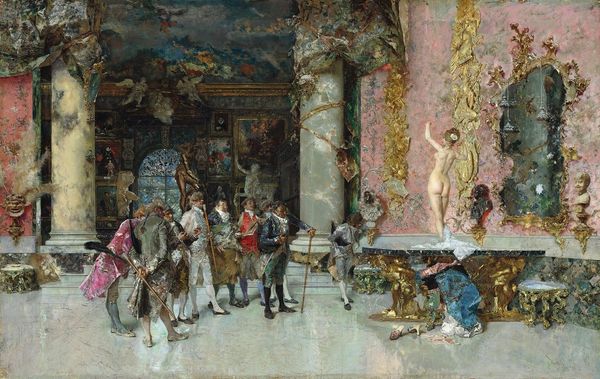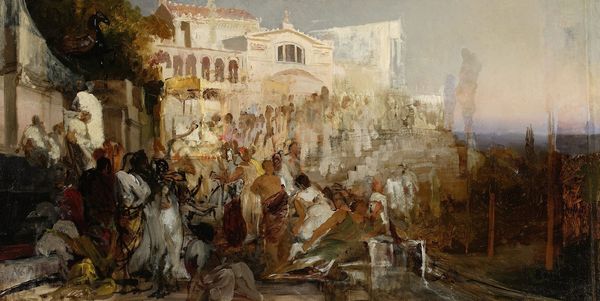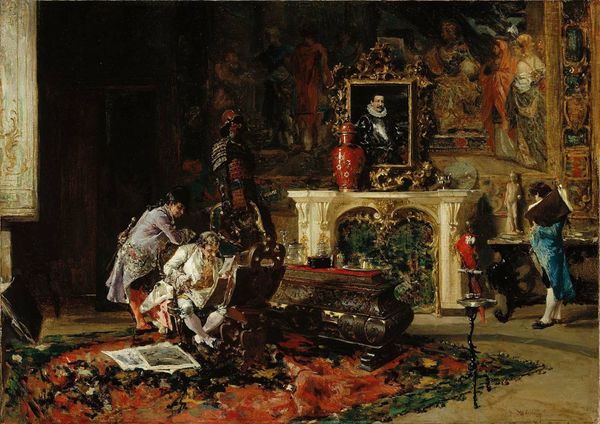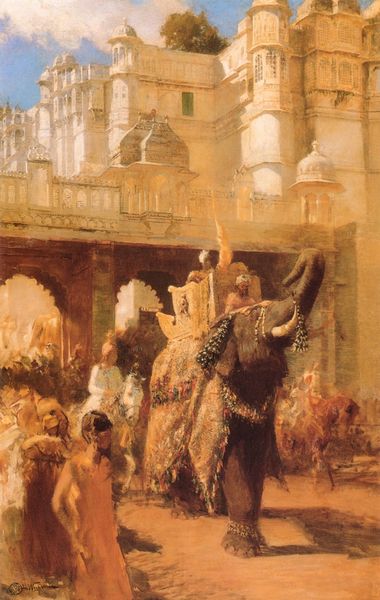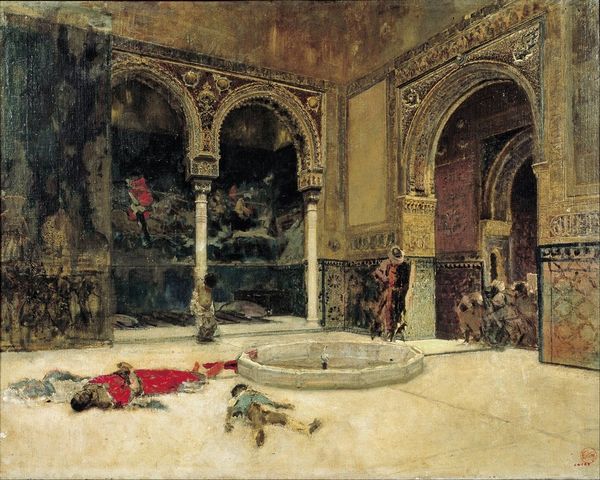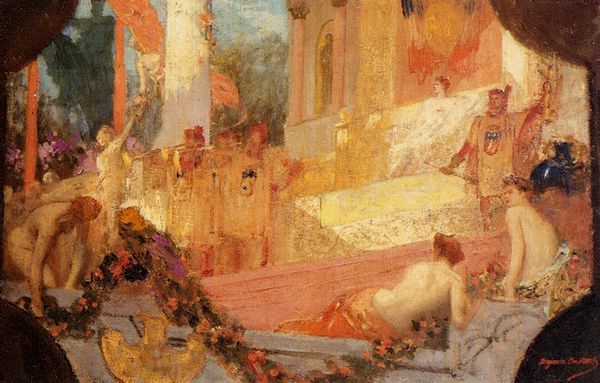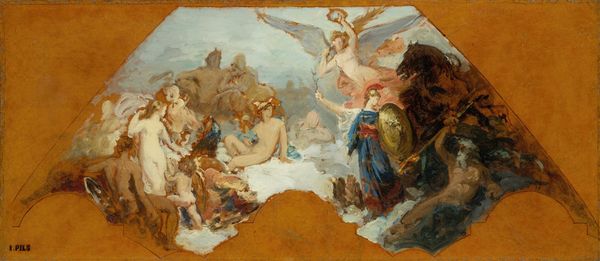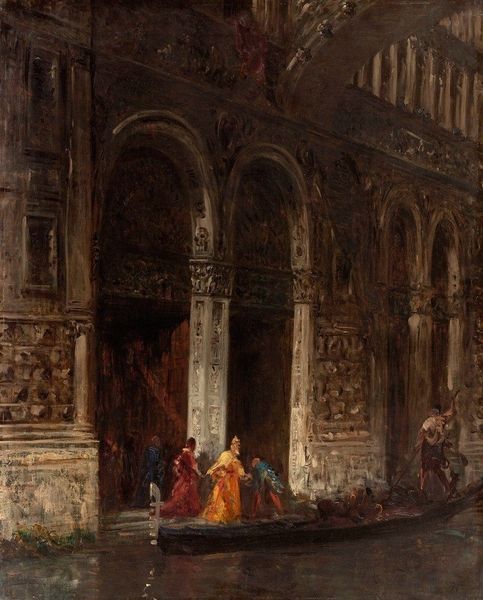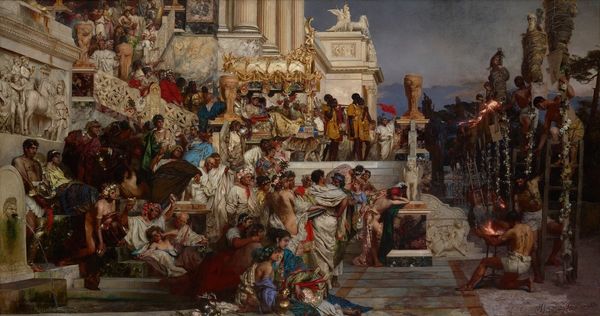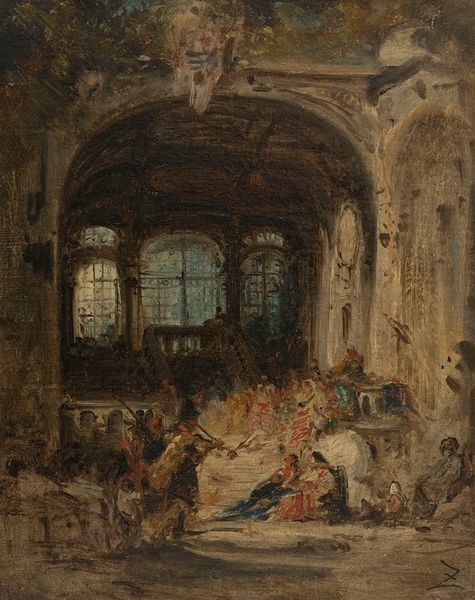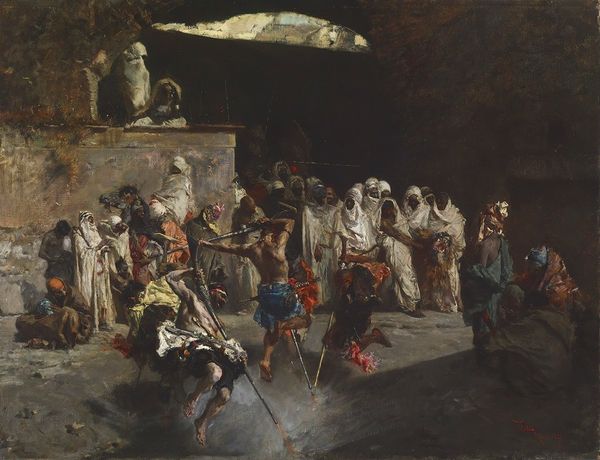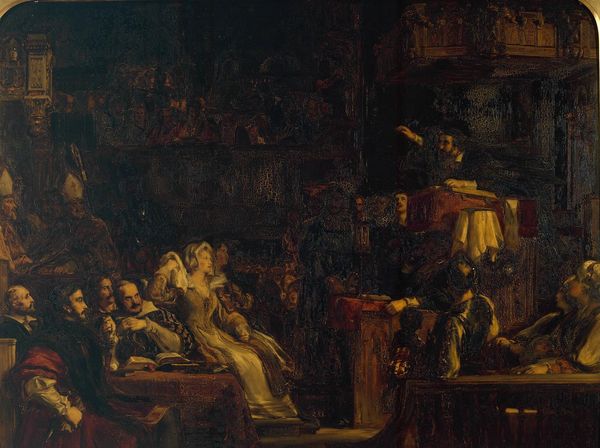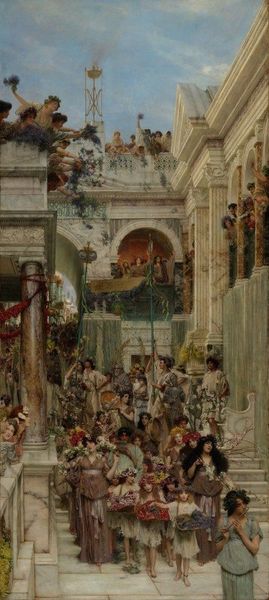
Copyright: Public Domain: Artvee
Curator: This is Henryk Siemiradzki's preparatory study for his monumental painting "The Torches of Nero", executed in oil on canvas in 1876. Editor: Monumental is right! It feels... vast, dramatic, even in this smaller study. I’m immediately drawn to the contrast between the grandeur of the architecture and the... well, the grim atmosphere hanging over everything. Like a storm's brewing, maybe, about to unleash some ugly truth. Curator: Siemiradzki, a key figure in academic art, devoted himself to historical painting, often selecting grand subjects from antiquity. This study offers a glimpse into his process of visualizing a notorious event: Nero’s persecution of Christians in ancient Rome. Editor: The brushwork is interesting, isn't it? Loose, almost impressionistic in places, especially when you compare the blurred forms in the lower part of the image with those crisper, brighter figures further up the staircases near what I take is supposed to be Nero’s raised position. It gives everything an appropriate sense of chaos. You feel the tension of the crowd looking to see who is next to be grabbed by Nero's henchmen. Curator: Absolutely. And you can really see how history painting during this period functioned, how academic painting was mobilized ideologically. Artists sought to deliver moral and political commentary through supposedly objective depictions of the past. Of course, "objective" is always a fraught claim. Here, one can view it through a lens of the historical narratives dominant in late 19th century Europe, painting Nero as a figure of pure evil. Editor: Well, let’s be honest. That was not an undeserved reputation, really. And thinking of Siemiradzki, he's really nailed how power theatrically exploits violence. This looks more stage than an imperial court. It also plays with our gaze, makes us implicated observers. The faces in the lower parts seem like ours, expectant and frightened as to who is next. Curator: Exactly. It invites consideration of how such historical interpretations were constructed. But from a purely visual stance, its an insight into an academic painting's visual rhetoric, with that manipulation of perspective you are pointing out, and play with the scale. Editor: So true. It's like a meticulously choreographed, highly colored nightmare. What it must have been like to have seen it looming in reality. It has a lot to say about what hasn't changed so very much as to how political powers act, which continues to be as chilling as it is instructive. Curator: It really brings the era to life through meticulous rendering and dramatic scale and vision, which helps us analyze historical interpretations, too. Thanks for these really important interpretations.
Comments
No comments
Be the first to comment and join the conversation on the ultimate creative platform.
